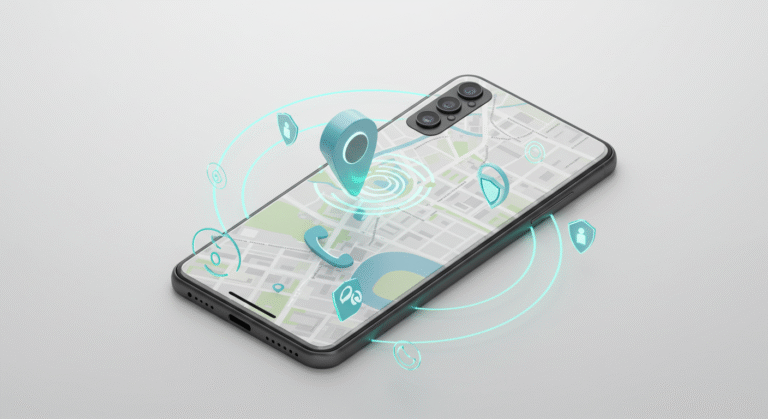Monitoring an Android phone without rooting is no longer just a tech expert’s skill. With improved apps and cloud-based tools, parents, employers, and even individuals can keep track of a device’s activity without tampering with its system files. If you’ve ever wondered how to manage android monitoring without rooting, this guide will walk you through the entire process in plain language.
Why People Want to Monitor Android Without Rooting
Many people hesitate to root a phone because rooting voids warranties, weakens security, and can even brick the device. Parents want to ensure their children’s online safety, employers want to protect company data on staff phones, and individuals may want to track their own devices for security. All of these needs can be met with tools that don’t require root access.
Understanding Rooting in Simple Terms
Rooting means unlocking the core (or “root”) part of the Android operating system so you can change settings and files that are normally restricted. While rooting can give advanced control, it also opens the door to malware, disables certain security features, and may cause instability. For most monitoring tasks, rooting isn’t necessary anymore because many apps now use permissions and cloud syncing to access data legitimately.
Root Access Android
Root access Android allows users to gain superuser privileges, unlocking the full potential of their devices. With root, you can remove pre-installed bloatware, customize system settings, install powerful apps, and even boost performance through CPU and GPU tweaks. It also enables complete backups, advanced automation, and deeper control over privacy. However, rooting comes with risks—such as voiding warranties, bricking the phone, or exposing it to security threats. Using tools like Magisk helps reduce risks by allowing systemless rooting. Always research device-specific methods before proceeding to ensure safe and effective use of root access on Android.
Step 1: Define Your Monitoring Goals
Before installing anything, be clear about what you want to monitor. Do you need call logs? Location tracking? App usage? Screen time? Not all apps offer the same features without root. By making a list of your goals, you’ll know which solution to choose.
Examples of common monitoring goals include:
-
Tracking GPS location to ensure a child’s safety.
-
Viewing text messages or social media activity.
-
Monitoring phone usage during work hours.
-
Backing up personal chats and files.
Step 2: Choose a Trusted App for Android Monitoring Without Rooting
Search for apps that clearly state they work on android monitoring without rooting. Some well-known apps offer basic features like call logs, contacts, location tracking, and web history without root. Advanced features such as reading encrypted chats or capturing screen activity may still require root access, so always read the feature list.
Checklist for picking the right app:
-
Reputation and reviews.
-
Transparent privacy policies.
-
Clear description of “no root required” features.
-
Secure data handling (encrypted dashboards).
Step 3: Install the App Correctly
After choosing a tool, follow its installation guide carefully:
-
Download the app from the official website or the Play Store (if available).
-
On the target phone, enable “Install from Unknown Sources” only if necessary, then disable it after installation for security.
-
Grant the app permissions like location, contacts, SMS, and usage access as prompted. These permissions allow the app to function without needing root.
Step 4: Set Up the Dashboard or Online Account
Most monitoring apps that don’t require root use a web-based dashboard or a companion app for viewing data. During setup you’ll usually:
-
Create an account with your email.
-
Link the monitored device to your account.
-
Log in from any browser to see updates in real time.
Because these apps work through permissions rather than root access, the phone’s data is uploaded securely to the dashboard.
Step 5: Test and Adjust Permissions
After installation, test whether the app is collecting the information you need. If something isn’t working, go to the phone’s settings and ensure the required permissions are still granted. On newer Android versions, battery optimization may stop background services; you can disable optimization for the monitoring app to keep it active.
Step 6: Keep Everything Transparent and Legal
Monitoring someone’s phone without their consent may violate laws in your country. If you’re a parent monitoring a child or an employer monitoring a company-owned phone, disclose your actions clearly. Transparency protects you legally and ethically.
Advantages of Android Monitoring Without Rooting
-
Security: No system files are altered, so the phone stays stable and secure.
-
Warranty: The device’s warranty remains intact because rooting isn’t involved.
-
Ease of Use: Installation is simpler compared to rooting.
-
Updates: Apps continue to work after Android updates, while rooted devices often break compatibility.
Limitations You Should Know
While no-root apps have improved a lot, there are still some limits:
-
They may not access certain encrypted messages directly.
-
Live screen recording or keylogging usually needs root.
-
Some features require one-time physical access to the device for setup.
Step 7: Maintain Privacy and Data Security
When using any monitoring app, always:
-
Set a strong password for your dashboard.
-
Use two-factor authentication if offered.
-
Choose apps that store data securely and allow you to delete it anytime.
Tips for Smooth Monitoring
-
Regularly check for app updates to keep features working.
-
Review your dashboard to ensure data is syncing correctly.
-
Educate yourself about Android’s permission settings to avoid accidental restrictions.
Final Thoughts
You don’t need to take risky steps to monitor an Android device effectively. By selecting a reliable app and following the right setup process, you can achieve android monitoring without rooting safely and legally. This approach gives you the essential information you need—whether for parental guidance, employee phone management, or personal security—without compromising the phone’s warranty, stability, or privacy.

